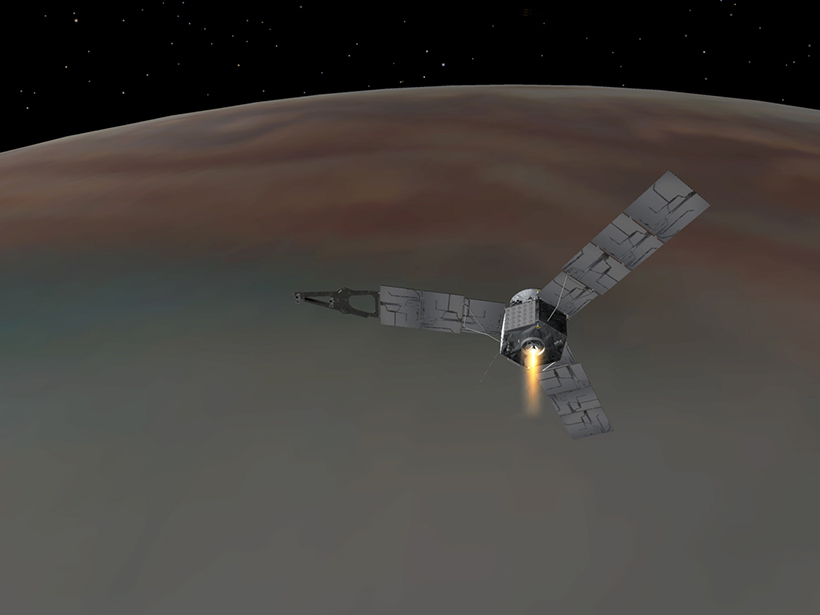NASA’s Juno spacecraft last night successfully entered into orbit around Jupiter following a 35-minute engine burn that slowed the craft enough for the planet to capture it.
“We’re there. We’re in orbit. We conquered Jupiter,” exclaimed Juno principal investigator Scott Bolton at a 4 July news briefing at NASA’s Jet Propulsion Laboratory (JPL) in Pasadena, Calif. Bolton works at the Southwest Research Institute in San Antonio, Texas.
“Tonight, through tones, Juno sang to us, and it was a song of perfection.”
At 8:53 p.m. Pacific Daylight Time last night, scientists received a signal from Juno confirming the orbit insertion.
“Tonight, through tones, Juno sang to us, and it was a song of perfection,” said Rick Nybakken, Juno project manager from JPL. “After a 1.7-billion-mile [2.7-billion-kilometer] journey, we hit our burn targets within 1 second on a target that was just tens of kilometers large.”
A 20-Month Long Investigation
Juno’s science instruments, which scientists had shut down several days before the spacecraft entered into orbit around Jupiter, will go back on again in a couple of days, according to Bolton. Then Juno will spend the next 20 months studying Jupiter’s core, mapping its magnetic field, and measuring the amount of water and ammonia in the Jovian atmosphere. Juno will circle Jupiter in elliptical polar orbits to avoid an intense radiation region around Jupiter’s equator and to limit damage to the craft’s titanium-shielded instruments.
The spacecraft will get its first good close-up look at Jupiter on 27 August, with all of its science instruments turned back on.
Steven Levin, Juno project scientist from JPL, said he looks forward to 27 August, 53 days from yesterday, when, with all of Juno’s instruments turned on, “we’ll get our first really good look [at Jupiter] from close up and learn how Jupiter is going to surprise us.” Levin said he hopes the mission also can help answer bigger questions about the origins of the giant planet and the solar system.
During its final approach to Jupiter, the Juno spacecraft captured the time-lapse movie below of the largest of Jupiter’s moons orbiting the planet, with their motions sped up from 17 days to about 3 minutes. From innermost to outermost, the moons seen are Io, Europa, Ganymede, and Callisto. The movie begins with images taken on 12 June when Juno was 16 million kilometers from Jupiter and ends on 29 June, 4.8 million kilometers from Jupiter.

—Randy Showstack, Staff Writer
Citation:
Showstack, R. (2016), Juno spacecraft nails its orbit around Jupiter, Eos, 97, https://doi.org/10.1029/2016EO055461. Published on 05 July 2016.
Text © 2016. The authors. CC BY-NC-ND 3.0
Except where otherwise noted, images are subject to copyright. Any reuse without express permission from the copyright owner is prohibited.

